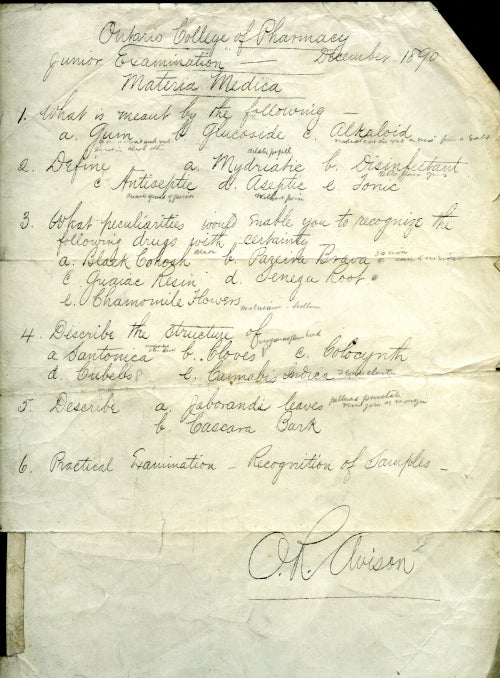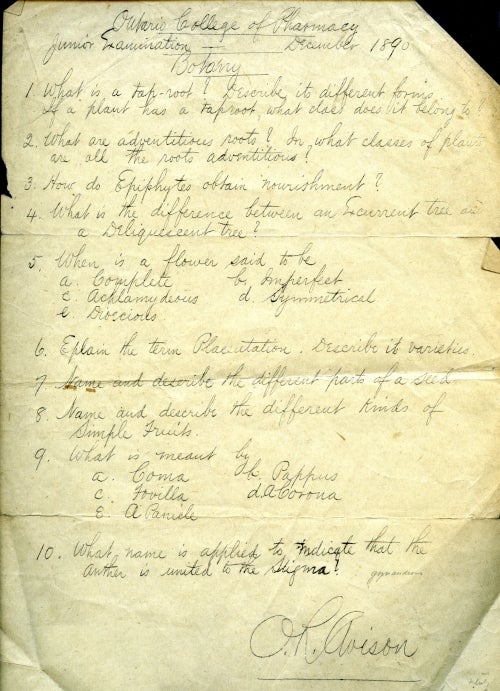Dana Porter Library, first floor
University of Waterloo Library
Waterloo, Ontario N2L 3G1
519-888-4567 x42619 or x42445
Recent blog posts
Blog topics
-
1492LandBackLane (1)
-
1900s (2)
-
Abyssinia (1)
-
advertisements (1)
-
album (1)
-
anatomy (1)
-
anniversary (1)
-
anti-suffragists (1)
-
archives (25)
-
arithmetic (1)
-
art (1)
-
autographs (2)
-
automation (1)
-
awards (1)
-
badges (1)
-
bank fraud (1)
-
barcodes (1)
-
beer (1)
-
Birth Control (1)
-
BLIND DATE (1)
-
book collection (1)
-
books (19)
-
bookworms (1)
-
botany (1)
-
Britain (1)
-
British history (1)
-
Burns (1)
-
Cambodia (1)
-
Canadian history (1)
-
casinos (1)
-
Catholicism (1)
-
censorship (1)
-
Charles Dodgson (1)
-
Chinese history (1)
-
clothing (2)
-
co-op (2)
-
co-op students (2)
-
cocoa (1)
-
community (1)
-
conservation (1)
-
correspondence (1)
-
COVID-19 (1)
-
Crochet (1)
-
culture (1)
-
Dance (1)
-
dancing (1)
-
detective (1)
-
dolls (1)
-
Drama (1)
-
Drawing (1)
-
ectoplasm (1)
-
Eid (1)
-
Eid Celebration (1)
-
eldritch horror (1)
-
employment (1)
-
Englishmen (1)
-
Eric McCormack (1)
-
Euclid (1)
-
Eugenics (1)
-
examinations (1)
-
exams (1)
-
exercise (1)
-
facsimiles (1)
-
fairy tales (1)
-
farms (1)
-
Fashion (1)
-
FINE ARTS (1)
-
fire (1)
-
five year plans (1)
-
flowcharts (1)
-
Frenchmen (1)
-
gas masks (1)
-
geese (1)
-
gender studies (1)
-
gender violence (1)
-
geography (1)
-
ghosts (2)
-
H.P. Lovecraft (1)
-
hidden art (1)
-
HIST250 (1)
-
history (6)
-
holy books (1)
-
horror fiction (2)
-
hydrography (1)
-
illustrations (1)
-
Indigenous (1)
-
inflation (1)
-
insects (1)
-
introduction (1)
-
journalists (1)
-
Kaufman Shoes (1)
-
Kitchener (2)
-
knitting (1)
-
Lady Aberdeen (1)
-
landscapes (1)
-
Latin (1)
-
Lewis Carroll (1)
-
LGBT studies (1)
-
libraries (1)
-
local history (1)
-
Lydia Dotto (1)
-
magazines (1)
-
magic (1)
-
mandibles (1)
-
marbling (1)
-
Marie Stopes (1)
-
media (1)
-
medicine (2)
-
Michael Fritsch (1)
-
midwifery (1)
-
murder (2)
-
mushroom (1)
-
mysteries (1)
-
mysticism (1)
-
Noel Hynes (1)
-
Novels (1)
-
nursery rhymes (1)
-
occult (2)
-
opera singers (1)
-
optimism (1)
-
outreach (1)
-
oxygen (1)
-
paleontology (1)
-
pharmacy (1)
-
photographs (5)
-
planning (1)
-
playboys (1)
-
Poetry (1)
-
pop-up books (1)
-
prejudice (1)
-
Pride (4)
-
pulp (1)
-
quietism (1)
-
quotes (1)
-
radio (1)
-
Ramadan (1)
-
rare books (11)
-
rates (1)
-
rationing (1)
-
religion (1)
-
repurposing (1)
-
research (1)
-
restaurants (1)
-
Romance (1)
-
rubber (1)
-
Sardinia (1)
-
satire (1)
-
science (1)
-
scrapbook (1)
-
scrapbooks (1)
-
seances (1)
-
Second World War (1)
-
Shoes (1)
-
smuggling (1)
-
Sorels (1)
-
spatulas (1)
-
spelling (1)
-
spiritualism (3)
-
spirituality (1)
-
staff (1)
-
Stamps (1)
-
steamships (1)
-
Stephen King (1)
-
Stranger Things (1)
-
students (3)
-
suffragists (3)
-
surveys (1)
-
telephones (1)
-
theatre (1)
-
theosophy (2)
-
Transcription (1)
-
trumpets (1)
-
typefaces (1)
-
urban planning (1)
-
vases (1)
-
volleyball (1)
-
waltzing (1)
-
wand (1)
-
water towers (1)
-
Waterloo (1)
-
Wedding (1)
-
women (1)
-
Women Studies (1)
-
women's studies (6)
-
Womens Rights (1)
-
world war i (1)
-
World War II (4)
-
WS (2)
-
zero gravity (1)
Blog posts by audience
- Post-doctoral fellows (1)
- Current students (12)
- Everyone (2)
- Future students (9)
- Faculty (10)
- Staff (10)
- Alumni (10)
- Parents (8)
- Donors | Friends | Supporters (9)
- Employers (7)
- International (7)
- Media (8)
Blog posts archive
In 1871, the Ontario Pharmacy Act was passed, establishing the Ontario College of Pharmacy. Up until that point, pharmacists had been completely unregulated:
As there were no laws or legislation regarding pharmacy practice prior to Confederation, the early Ontario pharmacist could have been one of four types of people: an apothecary who was trained by apprenticeship; an individual who had qualifications from another country; an altogether unqualified quack who put up a sign that read ‘open for business’; or, a
properly qualified doctor who dispensed drugs in a shop.
The Ontario College of Pharmacy opened its first permanent building in Toronto in 1887, which as of 2001 is the Leslie Dan Faculty of Pharmacy at the University of Toronto.
We are in the process of re-describing the absolutely fabulous Ontario History fonds, which includes among other things the following junior examinations from the Ontario College of Pharmacy. My guess is that the current exams are a little more stringent than "define disinfectant" or "name the parts of a seed".
Ontario College of Pharmacy. Junior Examination December 1890. Materia Medica.
- What is meant by the following: a. Gum b. Glucoside c. Alkaloid
- Define a. Mydriatic b. Disinfectant c. Antiseptic d. Aseptic e. Tonic
- What peculiarities would enable you to recognize the following drugs with certainty: a. Black Cohosh b. Pareira Brava c. Guaiac Resin d. Senega Root e. Chamomile Flowers
- Describe the structure of a. Santonica b. Cloves c. Colocynth d. Cubebs e. Cannabis Indica
- Describe a. Jaborandi leaves b. Cascara Bark
- Practical Examination - Recognition of Samples
O.R. Avison
Ontario College of Pharmacy. Junior Examination - December 1890
Botany
- What is a tap-root? Describe its different forms. If a plant has a taproot, what class does it belong to?
- What are adventitious roots? In what classes of plants are all the roots adventitious?
- How do Epiphytes obtain nourishment?
- What is the difference between an Excurrent tree and a Deliquescent tree?
- When is a flower said to be a. Complete b. Imperfect c. Achlamydeous d. Symmetrical e. Dioecious
- Explain the term Placentation. Describe its varieties.
- Name and describe the different parts of a seed.
- Name and describe the different kinds if Simple Fruits.
- What is meant by a. Coma b. Pappus c. Fovilla d. A Corona e. A Panicle.
- What name is applied to indicate that the Anther is united to the Stigma?
O.R. Avison
Next post: Anti-suffrage bud vase
Previous post: Ghosts in Special Collections & Archives






